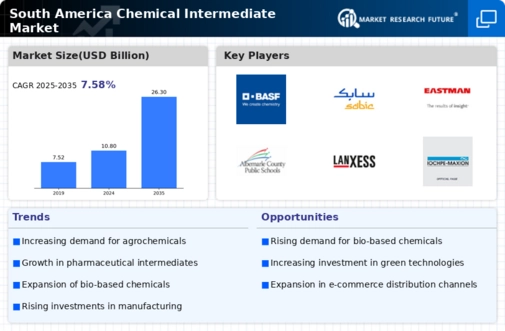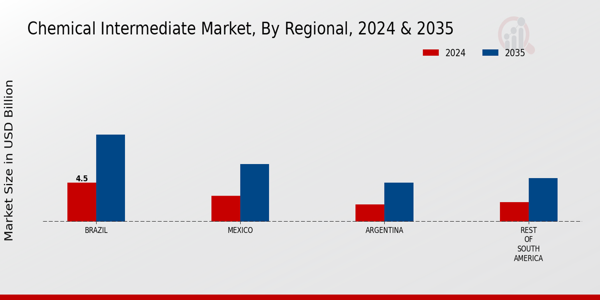The South America Chemical Intermediate Market is characterized by dynamic growth and competitive intensity driven by a diverse array of local and multinational players. The market includes various chemical intermediates crucial for a wide range of sectors, including agriculture, pharmaceuticals, automotive, and consumer goods. As companies favor strategically advantageous locations, existing players increase their investments and innovation to respond to specific regional demands, ensuring that they maintain a competitive edge. The landscape is influenced by factors such as regulatory frameworks, supply chain efficiencies, and technological advancements that reshape how these companies operate.
This adaptability is essential in navigating complex market conditions and capturing emerging opportunities that arise from shifting consumer preferences and sustainability trends. In the South America Chemical Intermediate Market, Dow stands out due to its robust manufacturing capabilities, extensive product portfolio, and commitment to innovation. The company leverages its advanced technological expertise to produce a wide range of high-quality intermediates tailored to meet the specific needs of regional industries. Dow has established a significant presence by actively collaborating with local stakeholders, enhancing its competitive position through strategic partnerships and customer-focused solutions.
The company's operational efficiencies, coupled with its strong research and development initiatives, enable it to deliver value-added products that resonate well within the South American markets. Dow's emphasis on sustainability initiatives also aligns with regional regulatory requirements and consumer expectations, further reinforcing its strength in this competitive landscape. BASF has a prominent position within the South America Chemical Intermediate Market, supplying a variety of essential products that serve multiple industrial applications. The company's strategic focus on innovation is evident through its diverse range of chemical intermediates, including specialty chemicals and high-performance materials.
BASF’s operational strength is supported by a well-established distribution network that ensures timely delivery and accessibility of its products across the region. The company has also pursued mergers and acquisitions to bolster its market presence, enhancing its capabilities and expanding its product offerings in South America. Key products and services such as agrochemicals, plastics, and performance materials have solidified BASF's reputation as a reliable partner for local industries. Through continuous investment in local operations and a commitment to sustainability, BASF maintains its competitive edge while addressing the evolving needs of the South American market.

























